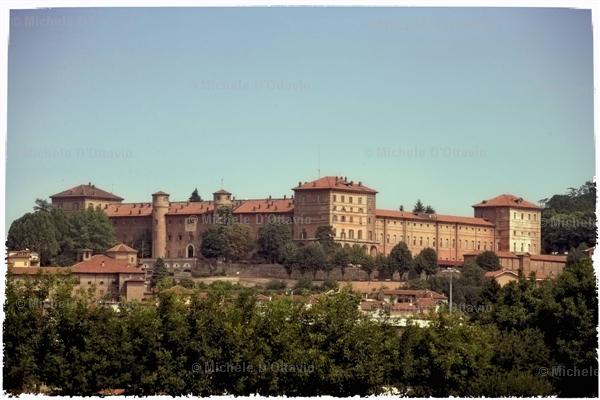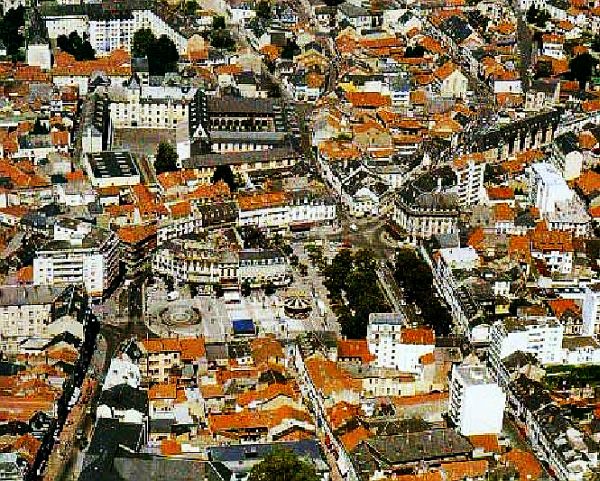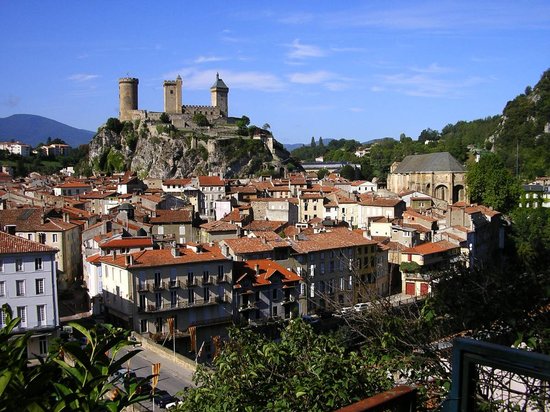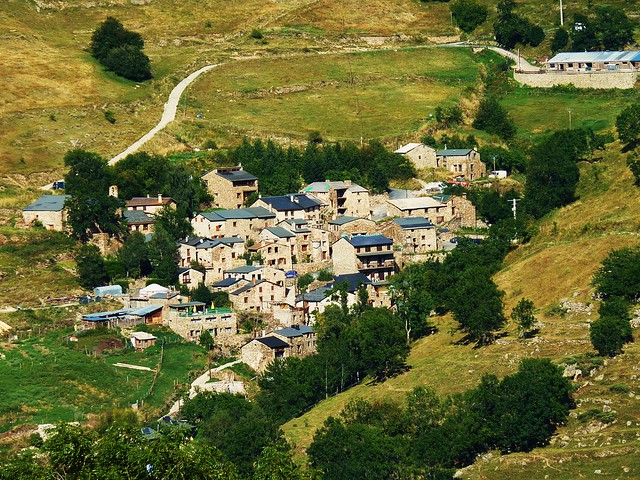Stage 12: Foix - Mantet, 180km
Climbs:
Col de Chioula (cat.1) 9,7km @ 7,3%
Col des Sept Frères (cat.4) 1,2km @ 7,1%
Col de Dent (cat.2) 13,4km @ 4,0%
Col de Jau (cat.1) 13,4km @ 6,7%
Col de Mantet (HC) 21,3km @ 6,1%
Points:
Prades (Avenida Louis Prat), 151km
Mantet (Parking), finish
With stage 12 the Pyrénées come back to bite the riders again, with them now facing the first major mountaintop finish of the race, and I've sought out a brand new, unused-by-the-Tour summits for the occasion. The partly-Catalan Pyrénées-Orientales region is our goal here, as we travel as far east across the range as Le Tour has ever ventured to go.
We start off, however, after a short transfer post-stage 11, in Foix, the administrative centre of the Ariège département. The city has hosted the Tour twice in recent memory; firstly as the start of a mountain stage to Loudenvielle in 2007 (won by Alexander Vinokourov), and then as the finish of a transitional stage in 2008 (won by Kurt-Asle Arvesen). Today it is more like 2007, though that stage was in a year of clockwise travel and thus more conventional than today's trek into the eastern Pyrénées. However, before the mountain tests can begin, there are 40 kilometres of uphill false flat before we arrive at a common Tour spot, Ax-les-Thermes.
From Ax-les-Thermes you could be forgiven for expecting a trek up to a finish at Bonascre/Ax-3-Domaines, but of course the stage would not be that short. There are a number of major climbs to be found to the north of the town; the Port de Pailhères is perhaps the toughest, but Pradel is far from easy too. I've gone for a slightly easier climb, to ease the riders in to the day's challenge; the
Col de Chioula is somewhat shorter, but has the benefit of steepness; that final stretch averaging over 9% will certainly be felt by the end of the day. The climb is not the steepest or the
highest, but serves as a nice category 1 warmup for the rest of the stage. At first, the downhill is gradual, before being interrupted by the cat.4 climb of the Col des Sept-Frères; after this it is a more typical descent down to Niort-de-Sault. After this the riders start the staggeringly inconsistent category 2 ascent of the
Col de Dent. Including some sections of descent and false flat, the climb is tougher than the 4,0% average gradient would have you believe, though it doesn't really get above 9% at any point. From there it's a technical descent into Axat via
this route, which will challenge the riders' skill and nerve before the day really heats up.
The penultimate climb of the day could see some action; it is plenty tough enough to see some contenders shelled if the pain is brought, but it is likely to be more by attrition than attack. The
Col de Jau is the eastermost Pyrenéan climb that the Tour has ever used, and here we are using the harder and better western side of it, from Axat via Sainte-Colombe-sur-Guette. The toughest sections are at the bottom, which will dislodge quite a few riders who will then have to suffer with the autobus on the way up the
dramatic slopes and
twists and turns of the Jau and make a bid to stay inside the time limit. There is also a difficult section in the middle, but generally this stays in the region where riders can get into a good rhythm until they crest
the summit, after which there will be 55 kilometres to go.
The first 23 kilometres of this are descent; the first half of these are fairly typical but the second half is just false downhill flat as we head into the French-Catalan city of
Prades for the intermediate sprint of the day; few sprinters or classics men will be around to contest this, however. After this the false flat switches from downhill to uphill, and eventually we turn left from the N116 after 6 kilometres
at this fetching castle here, and the road turns upwards again. At first false flat, but by the time we get to the village of Sahorre the riders will be acutely aware that they are starting to head uphill; by the time they get to Py there will be no turning back. Yes, it's a brand new summit finish for the Tour; the long, epic
Col de Mantet. 21 kilometres, an average of over 6%, and in the second half it never lets up below 7%, maxing out at 16%. The riders may have saved some energy yesterday, but now it's time for them to bring it all out.
Once the riders are
snaking their way elegantly up the mountainside, they will be in a national park, which will probably be clear anyway from
the scenery,
the road condition, and
the jawdropping backdrop. No time to appreciate the scenery for the riders, of course, until they reach
the summit. Not a great deal of room at the summit though, unfortunately, so the riders will face a 2km downhill to the finish, at the parking place just before arriving in the isolated village of Mantet. This also enables vehicles to park up on the road on the way further down, allowing the riders to come in in peace.
There is a good chance that this will, in terms of action, be a one-climb stage; but then, I've made sure the riders have plenty of uphill action in their legs ahead of that final climb, and also made sure to innovate a bit with which climbs to use. And besides; it's our first real MTF (sort of, can't really call the 2km from the Col de Mantet to the outskirts of the village a real descent finish) coming near the end of week 2. There's quite a long transfer waiting for the riders after the stage, so there will be little rest ahead of tomorrow.
Foix:
Mantet:

















































